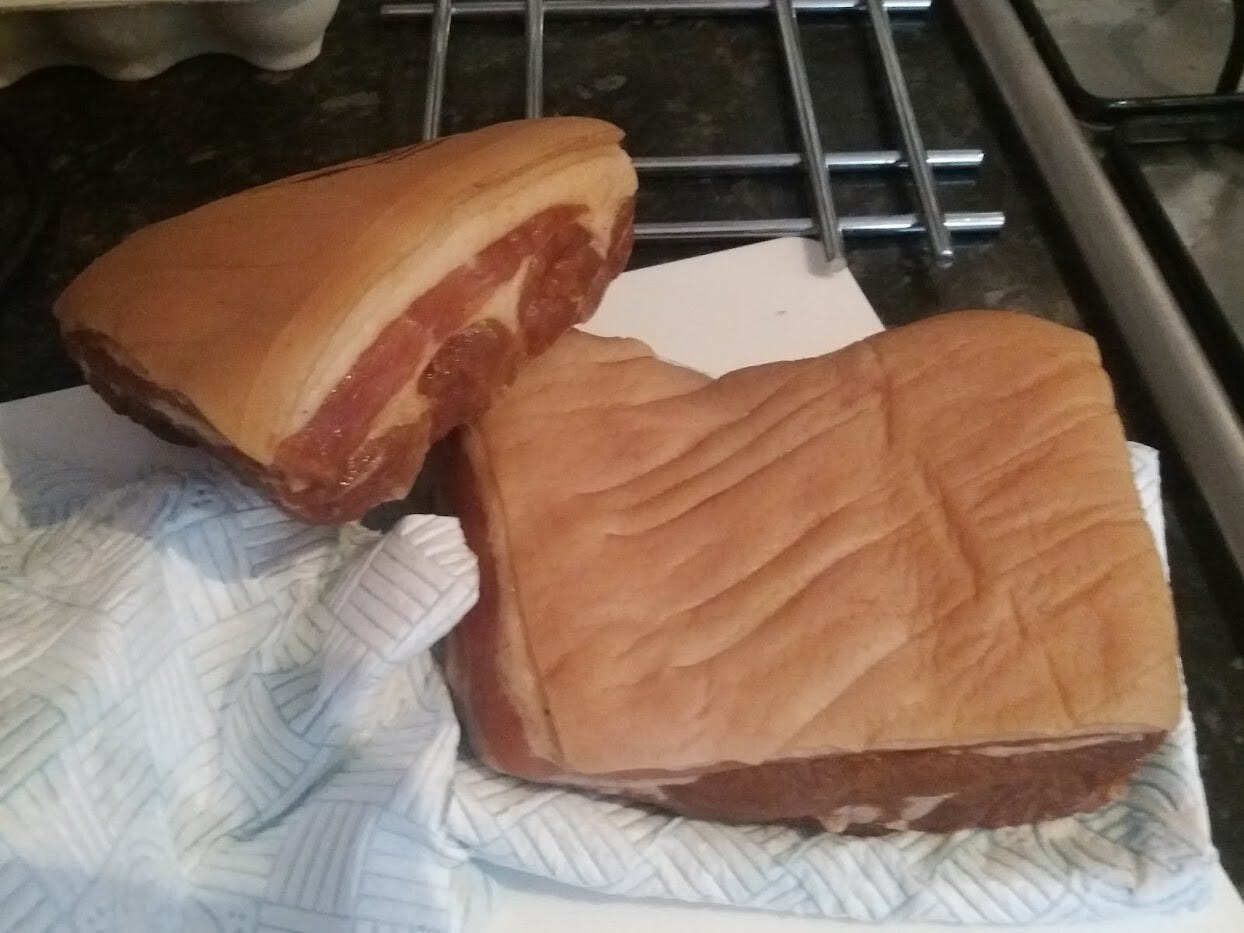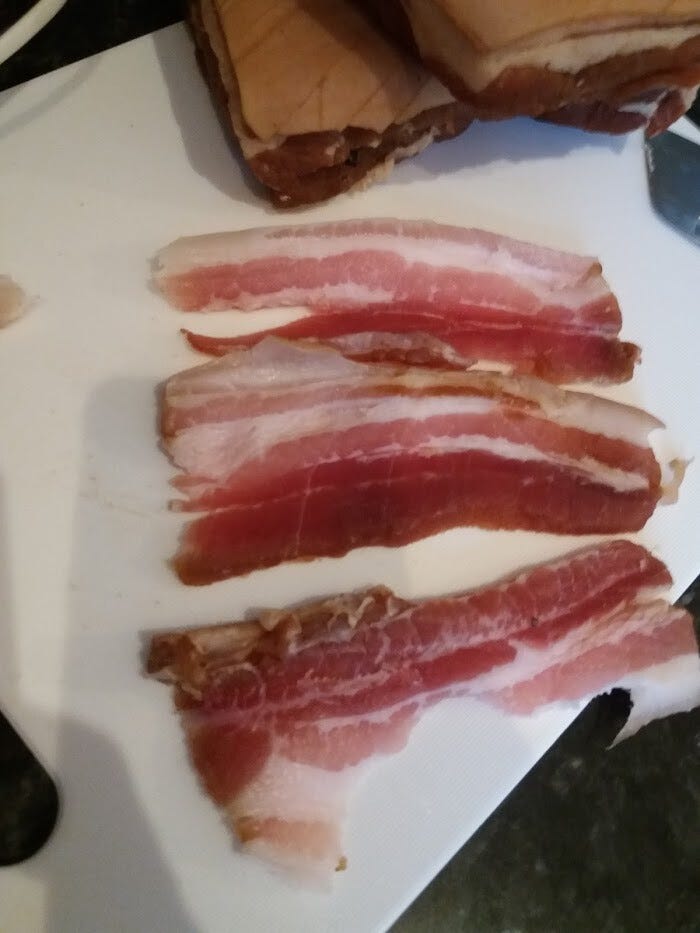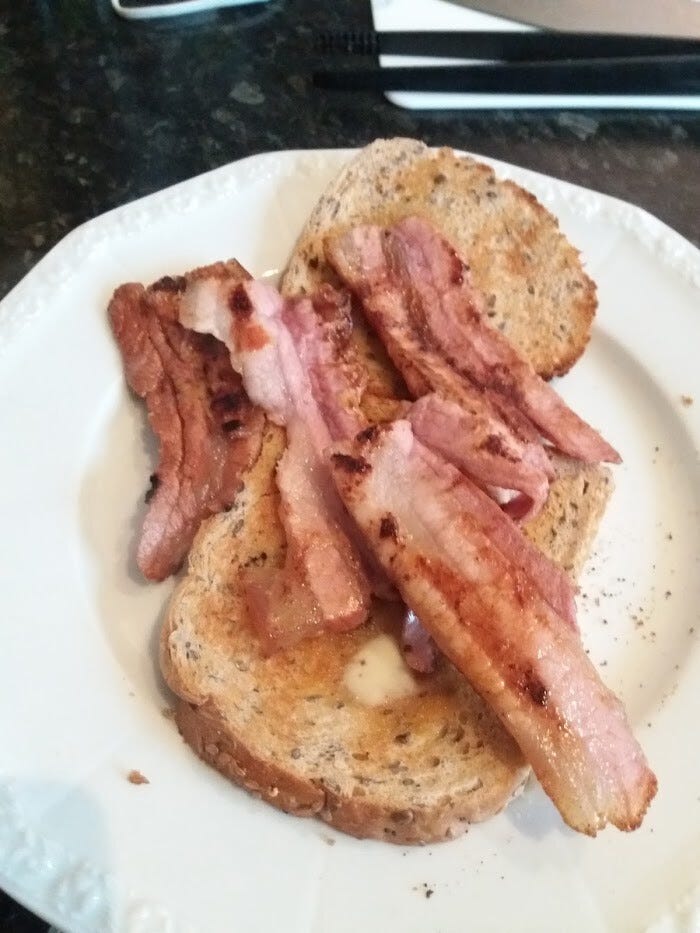On Bacon, The Breakfasting Arts II
The second part of my personal take on the English breakfast.
Having dealt with marmalade previously, it is now time to move onto one of the other foundation stones of an Englishman’s breakfast.
As a traditionalist, only true bacon of porcine origin will be considered here. The mutton equivalent, sometimes known as macon, was certainly popular in the 19th century and continued to be eaten through the second world war. George Orwell wrote a diary entry containing a recipe for it in 1940 here.
I do not understand how north Americans name their bacon, why some of it is Canadian or how they claim turkeys are involved. The English terminology of bacon is essentially split into 4 categories. Bacon can either be smoked or unsmoked - the latter is sometimes referred to as “green” in older cookbooks. There are two cuts; streaky made from the pork belly and back which is made, logically, from the loin on the back of the pig. A similar product, a kind of “face bacon” made from cured pork cheek, is known as guanciale and is the foundation of an authentic Italian carbonara.
I have made bacon myself once before, and shall do again in the autumn. I basically followed the procedure in the River Cottage cook books, along with British Red's youtube videos https://www.youtube.com/channel/UCGzRPk4-weg4odbYNCjujJA
It was made with 3lbs of pork belly, to make streaky bacon. I used plastic ziplock bags as they were cheaper and more convenient than big tubs.
The cure was made up to 1000g with 900 of salt, 90 of brown sugar, 7.5 of spices (pepper and juniper) and 2.5 of pink curing salt. I cut the pork in half, covered it in cure and put it in a plastic bag.
I turned and added more cure each day for 6 days - it would probably have been good after 5 and slightly less salty.
I was very happy overall, although it does need much slower cooking than bought bacon as the fat takes longer to render out. It’s amazing how much slower the fat renders out and makes you realise how much commercial bacon is full of water/gunk/random white liquid.
The bacon lasted three months refrigerated, without killing me, and made especially good cubes for pasta dishes.
after 6 days, then 2 days drying in a very cold kitchen
Curing bacon like this is something anyone can do in even the tiniest of kitchens. The only remotely difficult thing to find is the pink preserving salt, which you can get online easily nowadays - one of the few perks of our modern internet era is being able to get hold of the random ingredients in books which nobody had ever heard of in my childhood.
The real upgrade would be finding a better way of slicing the bacon thinly, without the outlay of a huge slicer. I guess anyone who gets into home curing would do much the same.






Very well done! I was just looking through some photos of my Maple Glazed Herb Brined bacon.. that I made 10 years past.
A friend told me " Once you turn 40 you either have to get into WW2 History or Smoking meats."
I had already been a charcutier for 10 years... totally obsesed... but I just said... " Wow... sounds about right.
Looks delicious! I also add Wright’s liquid smoke for flavour and shelf-life.